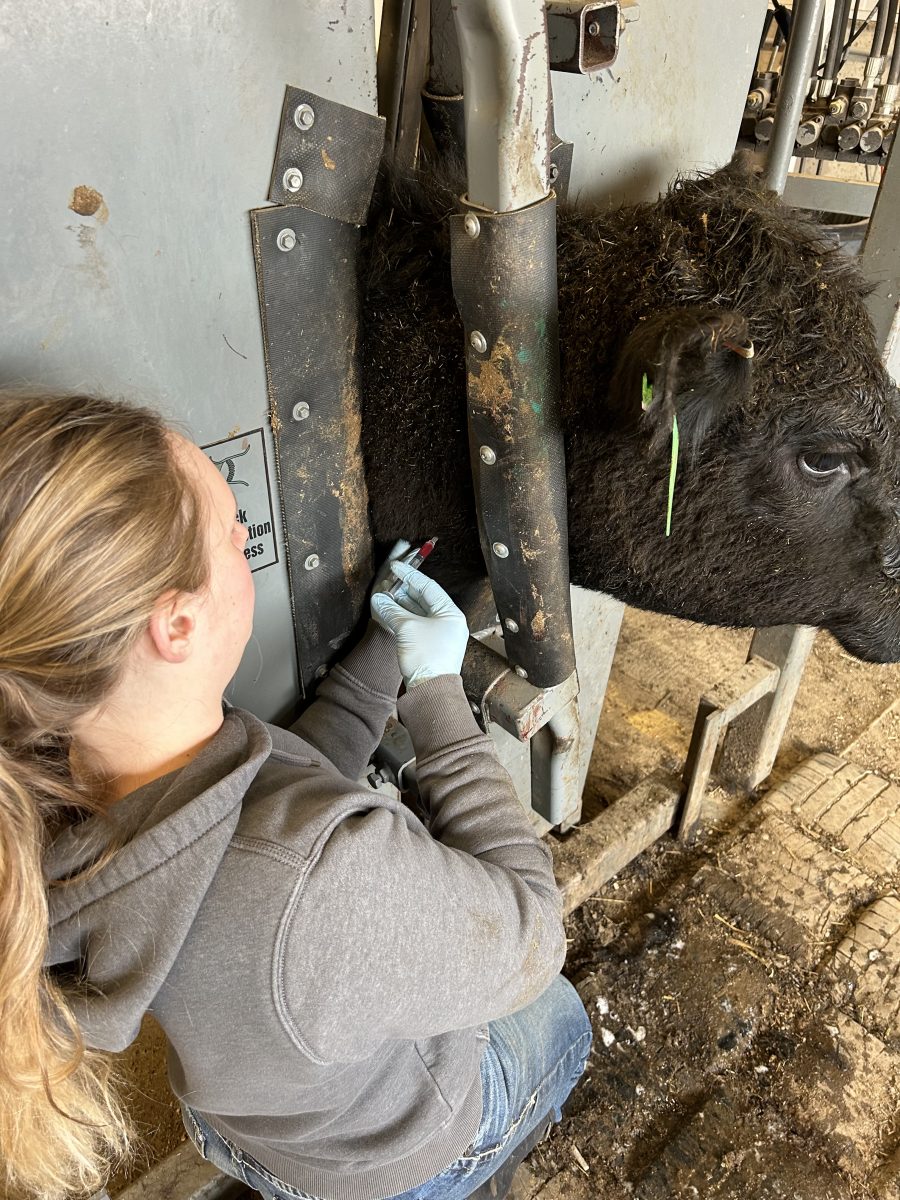The Cow-Calf Education and Research Facility is buzzing with life.
Calving season is in full swing, and with that comes the potential for new research opportunities. Assistant Ruminant Nutrition Professor Ana Menezes, Extension Specialist Hector Menendez and graduate student Meagan Wehrbein are utilizing these animals to study the effects of different feeding methods on pregnant cows during a critical period of calf development, and its prolonged effects on milk production.
The methods they use to find this are comparing two different diets – one is high concentrate, using a high energy feed, and the other is high forage, which is more grass hay. Menezes says this is significant to producers because during wintertime, forage quality declines or is not available.With this study they are also evaluating methane production by using Greenfeed system, water intake, colostrum quantity, and quality, after birth and milk production of beef cattle. The system is an individual animal emission detector used to measure gas fumes of methane, carbon, oxygen and hydrogen. Greenhouse gas emissions are a serious hurdle that the cattle production industry faces today and, with more studies, can be improved which could lead to a smaller carbon footprint.
“We can have an idea of not only the amount of gases that are being emitted but also the pattern throughout the day,” Menezes said.
SDSU is only one of a few facilities that can do water intake data, said Cody Wright, Cow-Calf nutrition manager and SDSU professor. Menezes is taking that opportunity and determining how much water a pregnant and new mother cow drinks within a day on the proposed diets.
According to the USDA, colostrum is the milk produced the first few days after birth and contains important antibodies and growth supporters that are essential to calf health. By studying the effects of diet types, on colostrum antibody production and overall amount, producers can better visualize the growth potential of calves.
In addition, the nutrient transfer during the cow’s gestation was also determined by collecting cotyledons from the cow’s placenta. Cotyledons act as a point of nutrient transfer between the cow to the calf while in their mother according to Menezes.
Wehrbein collected the largest cotyledon closest to the umbilical cord from the placenta after it was expelled after birth to look at the gene expression of glucose transporters. The researchers hope to see if the animals that were fed on a high concentrate diet had greater gene expression resulting in higher growing and performing calves.
Menezes and Wehrbein are also determining what they call a true lactation curve for beef cattle. This area has minimal research because it’s mostly studied within dairy breeds of cattle. This could assist producers in when and how long they should supplement cows for the best possible milk production.
Milk production is assessed by total milk collections, from calf birth up to four months of age. After the initial four months, collections will take place once a month until the following October to determine the mother’s milk output over time.
The research still has a long way to go according to Wehrbein, but she is “very excited” to see the implications of this study. With the support of fellow students, this project could have major economic impact for producers because it should shed light on the feasibility of feeding different diets on long-term health, Kevin Vanderwal, agriculture research manager said.
Calving season offers researchers opportunities
2
More to Discover
















